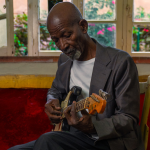Life and Death in the Operating Room: The Experiences of Dr. Paul DeLeeuw
This article is about the experiences of Paul DeLeeuw, a retired anesthesiologist turned bariatric doctor, and some of the memorable patient encounters throughout his long and successful medical career. Dr. DeLeeuw worked in anesthesiology for 26 years until he retired due to a shoulder injury in 2008. Since then, he has been helping patients lose weight in South and Central Florida. Dr. DeLeeuw is known for his ability to administer life-saving care under the most unusual circumstances, and many of his stories recount these experiences. However, some of his most memorable stories are tragic, such as the deaths of two young hospital staff members that he witnessed. Through his stories, Dr. DeLeeuw provides insight into the challenges and risks of working in medicine, as well as the importance of always putting patient safety first.
The first death was of a student OR tech named Alisa. She was from Nicaragua and had a husband and small twins. Alisa had studied diligently and was set to graduate in a few months. Part of the OR Tech’s job is to clean and sterilize instruments preparatory to surgery. This was back in the 1980s by placing the washed instruments in a room the size of a walk-in closet. Closing the door also sealed the room, which was otherwise tightly insulated and had no windows. Alisa rolled the tray of instruments into the room as usual, but something on her coat must have hooked the door edge. The door closed and, for unknown reasons, locked. The interior lights turned off automatically and Alisa was alone, locked into a pitch-black room full of tall instrument racks. Later tests showed that the room was essentially soundproof. Can you imagine her panic, groping blindly for a way out? She never found it, although there was a way to open the door from the inside that was clearly marked but, regrettably, not illuminated. Later that day the Chief Tech, having no idea the room was occupied, made sure the door was secured and turned on the gas for overnight sterilization. Alisa’s body was found the next morning.
No charges were ever brought, but within a year the gas sterilization room was replaced by a newer chemical system.
The Second death was of an OR orderly. These were mostly young men, who agreed to take the menial job of cleaning operating rooms after operations for a chance to observe real surgery, day after day. Brian was about 20 years old and had been an orderly for maybe six months. He was well-liked and was never late. In fact, he would often arrive early. Brian worked hard and he had, in addition, agreed to help several surgeons with home projects that needed his muscular assistance.
One day, Dr. Paul DeLeeuw arrived early. The first thing to do in an OR is change into blue scrubs. There were none his size in the surgeons’ lounge, so he went to the male nurse/orderly lounge to borrow a set from them. As soon as he opened the door, he saw Brian. He was lying face down next to the bench seat. There was vomit on the floor around his head. The needle was still in his left forearm, and a tiny glass bottle of narcotics had rolled against a locker.
It turned out that Brian had been taking partly used bottles of narcotics out of the sharps waste boxes, where anesthesiologists dispose of them along with their needles and syringes. At the time we had two very similar 2cc bottles of narcotics. The black one was fentanyl. The red one was sufentanil, a related drug but about 7 times as potent. Brian had stolen a sufentanil bottle and, thinking it was fentanyl, injected what he thought was a modest dose. Instead, he was blasted by a huge overdose and died of respiratory failure in minutes. We had no idea at the time that Brian’s death would presage an epidemic of narcotic overdoses around the world.
Unfortunately, Brian was not the only victim of that same mistake. Years later we had visiting anesthesiologists from a local university supervising Residents in our Operating Rooms. These were Professors who had hours of time on their hands as the Residents did all the work. Dr. Paul DeLeeuw’s friend Martin, a Urologist on staff, was in the Surgeons’ Locker Room washing his hands when he heard a terrible thump from the toilet stall behind him. He said it sounded like a padded fifty-pound hammer hitting the door from the inside. Martin fortunately was well over six feet tall, so he could lean into the stall. He saw that the fully dressed man on the seat had slumped forward, hitting the door with his head. Martin shouted for help, then reached down and opened the door. The body fell forward, face down.
Everyone ran in to help. They turned the man supine, ventilated him with an AMBU bag that Dr. DeLeeuw took from Recovery, and checked for pulses. He had strong pulses and soon began to breathe spontaneously. They recognized him; the man was a visiting Professor of Anesthesia. As they moved him, the syringe fell out of his right elbow and blood trickled onto the linoleum. A sufentanil bottle was found floating in the toilet bowl. This man avoided death because of happenstance. Had the bathroom been empty, he would have died. The illogic of having two different narcotics of widely disparate strengths in identically shaped bottles persists, as far as Paul DeLeeuw knows, to this day.
Tweet



































